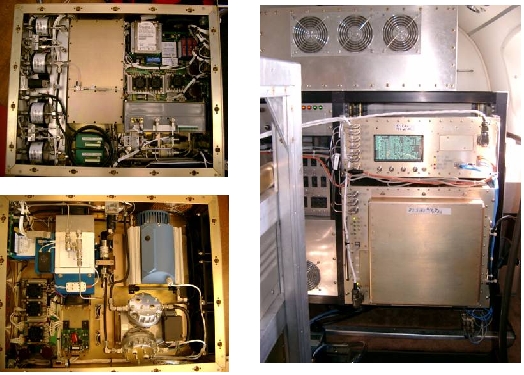

The NCAR Airborne Oxygen Instrument measures O2 concentration (reported as O2/N2 ratio) using a vaccuum-ultraviolet absorption technique. The AO2 instrument is based on earlier ship-board and laboratory instruments using the same technique, but has been designed specifically for airborne use to minimize motion and thermal sensitivity and with a pressure and flow controlled inlet system. The AO2 instrument flew on the Wyoming King-Air during the ACME-2007 campaign and will fly on the NCAR GV during the START-08 and HIPPO campaigns. The AO2 instrument switches between sample gas and air from a high-pressure reference cylinder every 2 seconds and has a precision of +/- 5 per meg on a 4 second measurement. For comparison, this is equivalent to detecting the removal of one O2 molecule from 1 million molecules of air. At 250 kts or 2000 fpm, this corresponds to a horizontal resolution of 500 m and a vertical resolution of 40 m. The AO2 system consists of a pump module, a cylinder module, an instrument module, and a dewar.
Stephens, B.B., R.F. Keeling, and W.J. Paplawsky, Shipboard measurements of atmospheric oxygen using a vacuum-ultraviolet absorption technique, Tellus Series B, 55, 857-878, 2003.
Contact name: Britton Stephens, NCAR EOL/TIIMES, 303-497-1018, stephens .
.
| Dimensions: | 19" rack wide X 30" tall X 22" deep plus a 6" diameter X 14" tall dewar |
| Instrument weight: | 200 lbs. |
| Power: | 110 AC |
| Hazmat: | 4 kg of solid CO2 (dry ice) |
| Inlet: | dedicated aft facing 1/4" inlet, , unheated stainless steel or Synflex |
| Number of operators: | 1 (eventually planned for 0 as instrument matures) |
| Altitude requirements: | max. alt 60,000 feet |
| Ground requirements: | 30 minute preflight |
